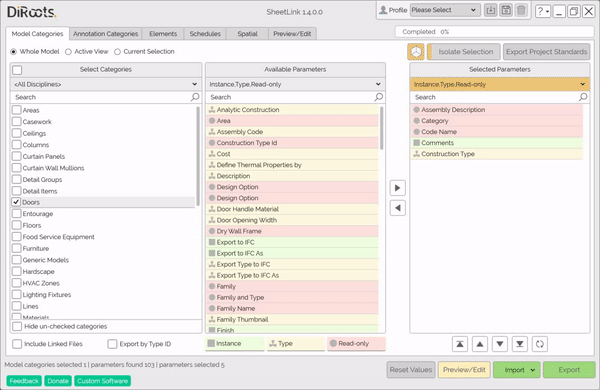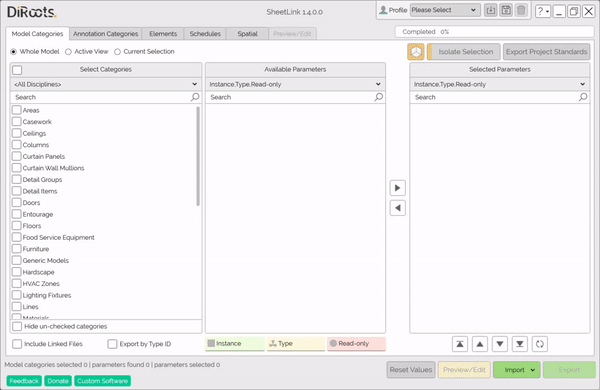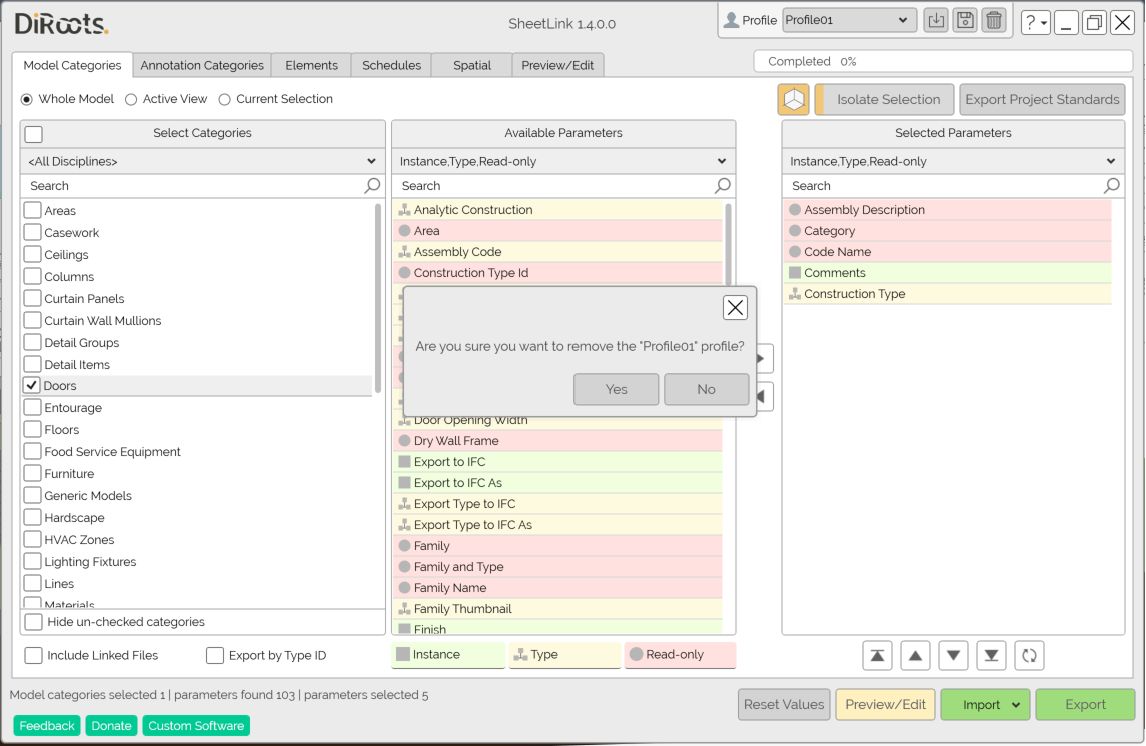Profiles
Table of contents
What’s saved in the profile
The following settings are saved in the profiles.
- Model view selected
- Categories, parameters, elements, schedules, rooms and spaces selected
Creating Profiles
SheetLink profiles make it easy to save your settings and reuse them later. It is also a handy way for BIM Managers to create standard rules (e.g., filename conventions) and share them across the organization.
Steps:
- In the window header, click on the save button next to the profiles list.
- Name the profile (give it a meaningful name because this is the name that will show up in the profiles list)
- Choose the location to save it.
- Click on the “Save” button to save the profile.

Note: the version on the image may not reflect the latest version of SheetLink/DiRootsOne.
Tip for BIM Managers!
Create the profiles in a network location to allow other users to import them.
See the "Importing Profiles" section to teach users how to pull profiles from a network location.
Importing Profiles
SheetLink profiles make it easy to import existing profiles to stay compliant with your company standards (e.g., profiles in a network location).
Steps:
- In the window header, click on the Import button next to the profiles list.
- Use the Windows File Explorer to find the profile (e.g., in a shared folder, location network, or local computer)
- Click on the “Open” button to import the profile.

Note: the version on the image may not reflect the latest version of SheetLink/DiRootsOne.
Deleting Profiles
Steps:
- In the window header, select the from the dropdown the profile you want to delete
- Click on the Delete icon next to the profiles list.
- Confirm.
 Note: the version on the image may not reflect the latest version of SheetLink/DiRootsOne.
Note: the version on the image may not reflect the latest version of SheetLink/DiRootsOne.